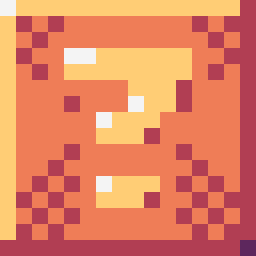WIP > TICSTACKER
A game where you need to stack various sized blocks on top of eachother
made by Adrian Castravete
uploaded by fkbm
added:
updated:
![]() 2
2
Stacker is a game in which you need to reach the highest point possible, stacking blocks perfectly. Should a block not stack up correctly the excess will fall off the edge and crumble.
Things still to do:
* nicer graphics, or even different ones for each piece
* sound and music
* maybe rework the scoring
So what do you guys think?
P.S. I know the grumbles overlap. It's intended. I feel it's nicer and simpler. Do you think I should make those stack as well?
2018-06-02: Added the possibility for different types of drops and improved some tiles.
2018-04-03: Added some basic sound functionality and made the game a bit harder.
Comments
 Nesbox
|
Very nice, thank you :)
|
 StinkerB06
|
I got 16,600 points first try! ;-)
|
 FabianLC
|
try to tweak the difficulty curve, it starts too slow.
|
 fkbm
|
@StinkerB06 Nice start score. :D I'm trying to bead 25600. That also means you saw some stars, didn't you? :P
@FabianLC It does, it does start a little slow, doesn't it? I'm trying to find a good balance. There's a maximum speed at which things make sense, so I'm trying to arrive to that but not have you fail too early. :) |
 fkbm
|
@Nesbox Love the scanline function. That's an awesome homage to old computers and how you'd churn everything from them. ;)
|
 StinkerB06
|
Why use the default SFX waveforms rather than custom waves?
|
 fkbm
|
Because I just wanted it to make an audible feedback for when you drop and when it splits. I'm by no means and in any way skilled with audio so, yeah. Until I understand and can do more I'm limited to simple sounds. :)
|
 StinkerB06
|
The 16 waveforms that are on the cartridge are 32-sample 4-bit PCM data tables. The editing matrix for the waves is a 32x16 grid, with the X-axis being time and the Y-axis being amplitude.
When a sound channel is active, the first value in the selected data table is played, followed by the next, and so on, until the waveform repeats itself over and over at the selected frequency. Amplitude is the voltage that is sent to speakers. The bottom position in the waveform matrix is zero-amplitude, while the top position is the maximum amplitude. Having a waveform with a flat line at the bottom produces pseudo-random binary noise. This noise is a 32767-step sequence derived from a 15-bit LFSR, which is much more applicable to the NES's noise channel LFSR design. Learn more here: https://en.wikipedia.org/wiki/Linear-feedback_shift_register Since the audio output of TIC-80 goes through a high-pass filter cycle, the voltage has a "curviness" in it. The non-linear volume of all four sound channels combined, will decay to 0, if the sound chip's 10-bit DAC is held to a certain amplitude position long enough. https://en.wikipedia.org/wiki/Pulse-code_modulation |
